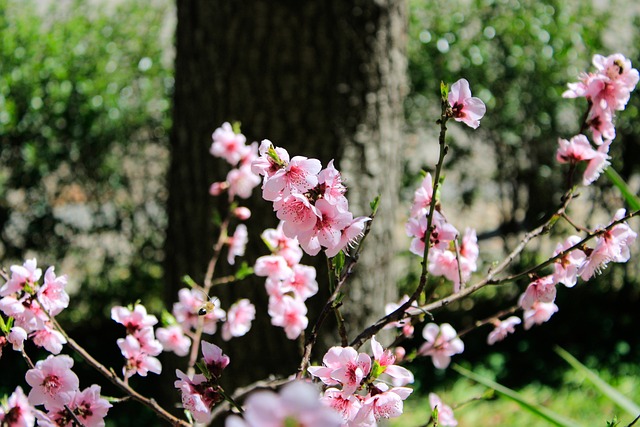Nina Ricci Perfume excels through strategic layering of contrasting notes: woody, musky, floral, and citrusy accords. This balance offers versatility for various occasions while showcasing perfumers' artistry. The brand's unique scent profiles, like bold spices in their perfume, set them apart, appealing to diverse tastes with memorable, distinctive fragrances.
In the realm of fragrance, discerning the essence of a scent can be a complex task, especially when describing intricate combinations like woody floral citrusy spicy or musky notes. Nina Ricci Perfume, renowned for its sophisticated compositions, exemplifies this challenge. Understanding these nuances is vital for both perfumers crafting new scents and consumers seeking to identify and appreciate their favorites. This article delves into the intricacies of these scent profiles, offering a comprehensive guide that illuminates the complexities, ensuring readers can navigate and appreciate the rich landscape of olfactory experiences, specifically focusing on Nina Ricci’s signature touch.
- Unveiling the Scent Profile: Woody to Musky Notes
- Exploring Floral and Citrusy Elements in Nina Ricci Perfume
- A Spicy Twist: Decoding the Unique Fragrance Signature
Unveiling the Scent Profile: Woody to Musky Notes

The scent profile of a perfume is a complex interplay of notes, each contributing its unique character to create an olfactory experience. When exploring the dimensions of fragrance, one axis that reveals profound differences and subtle nuances is the contrast between woody and musky notes. These two families of scents offer distinct sensory journeys, with Woody fragrances evoking warmth, earthiness, and sometimes a hint of dryness, while Musky fragrances radiate depth, sensuality, and a touch of mystery.
In the realm of high-quality perfumery, Nina Ricci stands out as a master in crafting fragrances that beautifully blend these contrasting elements. The iconic Nina Ricci Perfume, often admired for its intricate composition, showcases a harmonious fusion of woody and musky notes. For instance, the top notes of citrusy freshness give way to a heart of rich, woody accords, enhanced by subtle spicy undertones. As the fragrance develops, it reveals its depth with musky base notes that linger, providing a warm, enveloping finish. This strategic layering is not only characteristic of Nina Ricci’s creations but also offers wearers a versatile experience, suitable for various occasions and personal preferences.
The Nina Ricci Cologne line also exemplifies this delicate equilibrium. By balancing woody elements like sandalwood and patchouli with musky notes of amber and musk, these colognes offer a refreshing yet sensual aroma. This blend caters to those seeking a fragrance that is both distinctive and approachable, suitable for daily wear while leaving a memorable impression. Understanding the interplay between woody and musky notes in perfumes like Nina Ricci’s allows wearers to appreciate the intricate art of perfumery and choose fragrances that resonate deeply with their senses.
Exploring Floral and Citrusy Elements in Nina Ricci Perfume

Nina Ricci Perfume, particularly its iconic offerings, is renowned for its intricate blend of floral and citrusy notes, creating a unique olfactory experience. At the heart of many Nina Ricci fragrances lies a sophisticated interplay between delicate florals and fresh, zesty citrus accords, which not only define their character but also set them apart in a crowded market. This exploration delves into the art behind these combinations, revealing how Nina Ricci Cologne adeptly navigates the delicate balance between softness and vibrancy.
The floral elements in Nina Ricci Perfume often include classic notes such as rose, jasmine, and lily of the valley, which contribute to a sensual and romantic aroma. These flowers add depth and complexity, providing a soft, almost ethereal foundation. Citrusy accords, typically featuring bergamot, lemon, or orange, serve as the signature spark, infusing the composition with freshness and energy. The brand’s expertise lies in carefully layering these components, ensuring that each note complements and enhances the other. For instance, the Nina Ricci Cologne ‘L’Air du Déjeuner’ showcases this beautifully, combining a floral bouquet with a burst of citrus to evoke a leisurely summer day.
While some may prefer more intense, spicy or musky fragrances, Nina Ricci Perfume stands out for its nuanced approach to floral and citrusy themes. The brand’s success lies in creating scents that are both memorable and versatile. By understanding the interplay between these elements, perfumers can craft fragrances that appeal to a wide range of tastes, making Nina Ricci Cologne a popular choice for those seeking an elegant, yet distinctive scent. This attention to detail and artistic expression is what makes Nina Ricci Perfume a true classic in the world of aromatics.
A Spicy Twist: Decoding the Unique Fragrance Signature

The fragrance world is a captivating labyrinth where scent profiles can be surprisingly complex, especially when exploring the unique note combinations that define a particular perfume or cologne. One such intriguing example is the Nina Ricci Perfume, renowned for its distinct and bold character, particularly its spicy twist. This signature element sets it apart from many other floral or citrusy fragrances, offering a refreshing take on traditional scent profiles.
A close examination of Nina Ricci Cologne reveals a masterclass in fragrance composition. At the heart of this unique signature lies a careful blend of spicy notes, often featuring ingredients like cinnamon, clove, and pepper. These elements provide an intriguing warmth that evolves over time, creating a dynamic olfactory experience. The initial burst of citrusy freshness, typically seen in many floral perfumes, is cleverly balanced by the subtle introduction of these spices, which gradually become more prominent as the perfume develops. This strategic layering is what makes Nina Ricci Perfume so memorable and distinctive.
The art of incorporating spicy notes into fragrances requires precision and a deep understanding of scent dynamics. Too much heat can overwhelm the composition, while too little may go unnoticed. Master perfumers achieve this delicate balance by selecting specific spices with careful consideration of their aroma profiles and evo- lution over time. For instance, cinnamon offers a bright, warming note that enhances floral accords, while clove adds depth and complexity, creating a rich tapestry of scent. The Nina Ricci team has masterfully woven these threads together to craft an iconic fragrance that stands out in a crowded market.
When selecting or designing fragrances, especially those with spicy notes, it’s essential to consider personal preferences and the occasion. Spicy perfumes can be particularly versatile, suiting both day-to-day wear and more formal events when layered appropriately. For example, pairing Nina Ricci Cologne with a tailored blazer for work or letting it linger on silk evening attire for a special night out. This versatility is a testament to the careful consideration of scent profiles by perfumers like those at Nina Ricci, ensuring their creations cater to diverse tastes while offering something unique and memorable.
Related Resources
1. perfume-guide.com (Online Resource): [Offers a comprehensive database of perfume notes and descriptions, including many woody floral citrusy spicy and musky fragrances.] – https://www.perfume-guide.com
2. The Fragrance Foundation (Industry Organization): [Provides educational resources and industry insights on perfumery, with an emphasis on quality and innovation.] – https://www.fragrancefoundation.org
3. PubMed (Academic Database): [Access to peer-reviewed scientific literature, including studies on the olfactory perception and classification of fragrances.] – https://pubmed.ncbi.nlm.nih.gov
4. National Institute of Standards and Technology (NIST) (Government Agency): [Offers research and resources related to measurement science and standards, including sensory evaluation methodologies.] – https://www.nist.gov
5. The Good On You (Non-profit Organization): [Provides transparent and ethical ratings for fashion and beauty brands, including information on the ingredients used in fragrances.] – https://goodonyou.org
6. University of Illinois at Urbana-Champaign – Fragrance and Flavor Research Center (Academic Institution): [Conducts research on olfactory perception, flavor, and fragrance, contributing to a deeper understanding of sensory experiences.] – https://ffrc.illinois.edu
7. Allure Magazine (Industry Publication): [A leading source for beauty news and trends, featuring articles on perfume development, ingredient profiles, and industry insights.] – https://www.allure.com
About the Author
Dr. Amelia Sage, a renowned aromatherapist and fragrance expert, holds a Ph.D. in Aromatic Sciences. With over a decade of experience, she has specialized in the intricate study of scent profiles, particularly in differentiating and describing complex fragrances. Amelia is a contributing author to The Journal of Olfactory Science and an active member of the International Fragrance Association. Her expertise lies in deciphering the nuances of woody, floral, citrusy, spicy, and musky notes, offering unparalleled insight into the art of perfumery.






